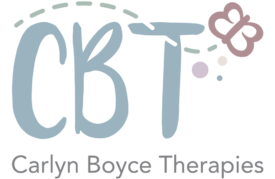Let me tell you more, about CBT!
Cognitive-behavioural therapy (CBT) is a well-established and evidence-based approach to addressing common mental health challenges, including depression and anxiety disorders. It works by fostering a collaborative partnership between therapist and client, to empower individuals to identify, address, and ultimately overcome their difficulties. By focusing on thoughts, behaviours, and physical symptoms that contribute to harmful patterns, CBT helps break these cycles, making problems feel less overwhelming. Over time, this therapy aims to replace unhelpful thinking and behaviours with more positive and productive ones. Our work together will involve applying these therapeutic principles in a practical, goal-oriented manner, which is central to the success of CBT. Your active participation and motivation are essential to achieving the best outcomes. If we haven't started working together yet or if you're still considering CBT, I'd like to share a bit more information about it.
CBT is not perfect
While CBT has been popular for decades, some may feel it's not right for them, possibly due to misconceptions or the perception that it’s a one-size-fits-all approach. However, in our increasingly diverse world, it’s crucial to adapt CBT to meet the unique needs of each individual. This is a personal passion of mine—I believe in the power of CBT, but I also recognise that every person is different. Therefore, while the standard protocols and manuals are helpful, they must be flexible enough to fit the diverse backgrounds and experiences of those we serve. CBT can be incredibly effective, but it needs to evolve to stay relevant and impactful. Let’s break away from outdated perceptions and bring CBT into the future. I want to help build the foundations that will support people on their journey towards better mental health.
What are the basics?
I want to help you grasp some basic foundations of CBT, starting with understanding yourself. When we're facing struggles, feeling low, or dealing with anxiety, we often don't look at the root of the problem or connect the dots between what's happening and how we feel. This might be because the situation is overwhelming, we're avoiding it, or we simply don't understand it. So, let's explore the concept of vicious cycles.
To help you understand a typical CBT vicious cycle, imagine a circular flowchart divided into four interconnected sections:
1. **Situation/Trigger**: This is the event or situation that initiates the cycle.
2. **Thoughts**: These are the automatic negative thoughts that arise in response to the trigger.
3. **Feelings**: The emotions that are generated by those negative thoughts.
4. **Behaviour’s**: The actions or behaviours that result from those negative feelings, often reinforcing the original situation or creating a new one.
These sections are connected by arrows, illustrating how each element influences the next, perpetuating the cycle. Breaking this cycle is difficult without intervention, but it’s the core focus of CBT.
The image at the start, is an example of a vicious cycle.
What can you start to do?
To begin addressing your cycle, start by writing down your thoughts, behaviours, feelings, situations, and triggers. This visual representation will help you identify what keeps you stuck and how you might break free. You can start this yourself but if you were in therapy with me, I would guide you through this process but also go into more depth. However, creating this visualisation of a vicious cycle yourself can be a powerful first step.
This is just the beginning
CBT involves a wide range of techniques, and this is just the beginning. The goal is to help you build your toolbox of strategies that can support you throughout your journey. For me, CBT has been life-changing; my expertise in this area has not only transformed my life but also allowed me to help others make positive changes in theirs. I often tell my clients that CBT can seem like common sense, but when you're feeling overwhelmed or struggling, it's easy to lose sight of those simple truths. It’s as if you've locked away these insights, and my role is to help you unlock them again. Ultimately, it's you who does the hard work—I'm just here to guide you. I hope this serves as a helpful starting point for you.
For a deeper understanding and to start building the foundations of CBT, you might consider downloading my ‘CBT Workbook’ here.
**£39.99**

